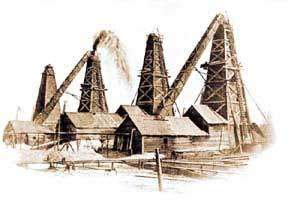
The Baku-Supsa pipeline is one of many such projects that have sprung up in the region since the fall of Communism, when the massive natural resources of the Caspian region were opened to foreign investment for the first time. The route of this pipeline runs from the Sangachal terminal 40km south of Baku, the capital of Azerbaijan, to the Georgian port of Supsa on the Black Sea. The pipeline is operated by BP and owned by Azerbaijan International Oil Consortium.
In the beginning, the project was designed for oil export within the project over the Chirag Field. The terminal has four reservoirs with a capacity of 120,000t, is equipped with offshore mooring and can facilitate tankers with a deadweight of up to 150,000t.
Russian Aviation bombed the pipeline on 10 and 12 August 2008. Therefore, the Baku-Supsa pipeline, also known as the Western Route Export Pipeline, was closed in August 2008 as a precautionary measure due to military activities in Georgia. It was reopened in November 2008.
KazMunaiGaz has an interest in the project for constructing a corridor through the Black Sea. The company expects the pipeline to pump oil crossing the Baku-Tbilisi-Ceyhan pipeline.
Timescale
The terminal was completed and officially opened in April 1999. The pipeline itself had been finished in the last quarter of 1998, with oil deliveries beginning in the first quarter of 1999. It had been started some four and a half years previously. However, the lead contract was only awarded to Kvaerner in 1996 and was completed on time and to budget within three years. The total cost of the western route was estimated at $556m.
The company suspended the oil transportation by the pipeline in October 2006 when abnormalities occurred during inspections. The repair work over the pipeline continued from October 2006 until November 2008. Oil shipments resumed in June 2008.
Terminal and pipeline details
The Baku-Supsa pipeline is an 830km-long, refurbished Soviet-era pipeline. Initial transport capacity was approximately 115,000 bpd, which was expanded to 220,000 bpd.
There are six pump stations, two pressure reduction stations in west Georgia, the Supsa terminal and the offshore loading facility. The four storage tanks at the terminal have a total capacity of 160,000m³, and are of equal size. The facilities can load at a rate of 6,000m³ an hour.
Lead contractors
The lead contractor for the terminal was Kvaerner John Brown, although there were many smaller companies involved. For example, the catenary anchor leg mooring (CALM) system was installed by Dutch firm Bluewater. Another small company called Corinth Pipeworks SA, of Greece, supplied steel pipes for the project. An unusual feature of the terminal is that it has a marine security system supplied by Lockheed Martin, a US defence company.
The construction of the main civil works and buildings of the Supsa oil terminal, including the control and administration building, maintenance workshop, substation, security gate house and fire station, were completed by TML Construction, Turkey. This included steel structures (such as shelters for export pumps, fire water pumps, diesel transfer pumps, runway beams, access platforms and support frames for cabling), foundations (including piling for pumps, generators, tankage, steel structures, pipe tracks and pipe supports), roads, bund walls, site levelling and drainage works. The value of this contract was $9.3m.
The project has benefited from European support. Notably, the EIB decided to commit $120m to the terminal in February 2000. This was to be used to upgrade the facility from its 115,000 bpd capacity.
Geopolitical issues
The Georgian authorities discussed the possibility of building a refinery at Supsa to process the crude oil coming out of the pipeline. The Georgian government was keen to cement the pipeline as a permanent feature because it yields a steady and reliable stream of tax revenues.
The proposed western route, a refurbished Soviet-era line, bypasses Russia but was opposed by Turkey because it requires tankers for crossing the Black Sea, which are forced to transit the Bosphorus. Turkey sees this as a potential ecological hazard. This was a significant threat because Turkey is in control of the only route from Georgia to the west. Therefore, the pipeline was enforced to go through Turkish straits for shipping to global markets.

